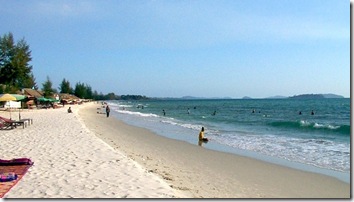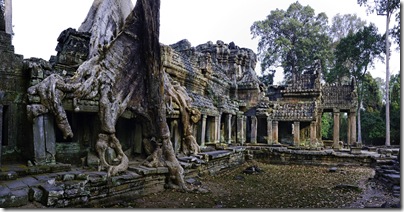Sihanoukville known as Kampong Saom, is a province (khaet) of Cambodia on the Gulf of Thailand. This port city is a growing Cambodian urban center, located 185 kilometres (115 mi) southwest of the Cambodian capital, Phnom Penh. The province is named after King Father Norodom Sihanouk and grew up around the construction of Sihanoukville Port. Construction on the port began in June 1955 and it was the only deep water port in Cambodia.[2] The port was built in part due to the waning power of the French leading to the Vietnamese tightening their control over the Mekong Delta and hence restricting river access to Cambodia. Sihanoukville's beaches have made it a popular tourist destination.
Sihanoukville is located in the south of Cambodia. It is 230 kilometres (143 mi) southwest of Phnom Penh on a small peninsula.. Beaches are the main feature that attracts national and foreign visitors. A small archipelago is embedded by the Sihanoukville Bahia off its south and west coast. The commercial and international port is located at the north west. The limits of its territory: North and West Koh Kong province, East Kampot province and the southern Sea of Cambodia. The best time to travel to Cambodia is December to January.

Beaches that line the west contour of the city from north to south are Victory Beach, Lamherkay Beach, Koh Pos Beach, Independence Beach, Sokha Beach, Serendipity Beach, Ochheuteal Beach and Otres Beach. The most popular beaches are Ochheuteal, Sokha, Independence and Victory. Tourists can take water taxis to the nearby islands for diving, snorkeling, and game fishing.
The peninsula is separated from the central plains of Cambodia by the Damrei Mountains, especially the Bokor. The city is also besides the Ream National Park (210 km2) and it includes the islands of Koh Thmei and Koh Sei.
Since Snooky is a relatively new city (1950) and grew along with the steady growth of tourism, all the negative elements came along too. It is not safe (even for men) to walk alone on the beach after 21:00, there are plenty of glue sniffing kids and a lot of java (methamphetamine) smoking girls and boys and a price-fixing tuk-tuk cartel.

